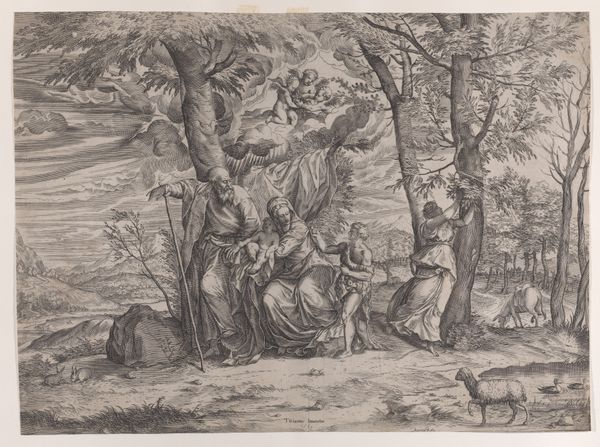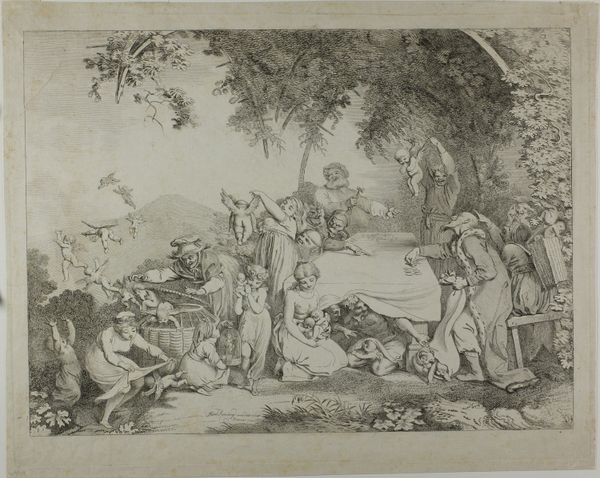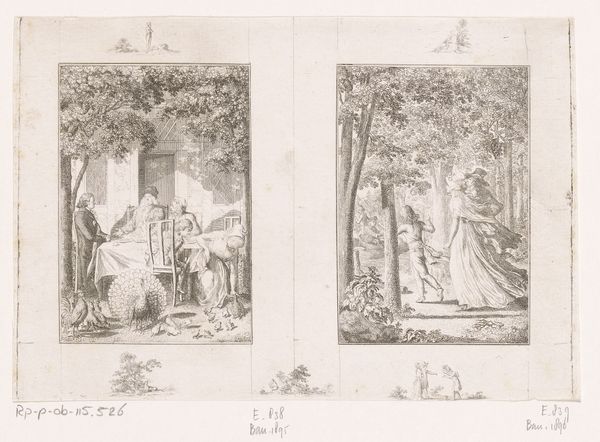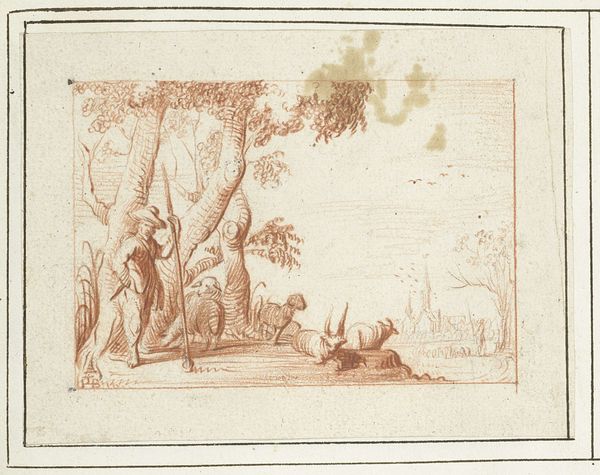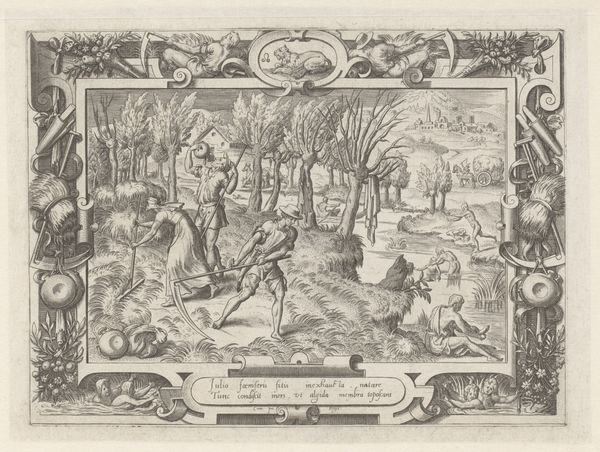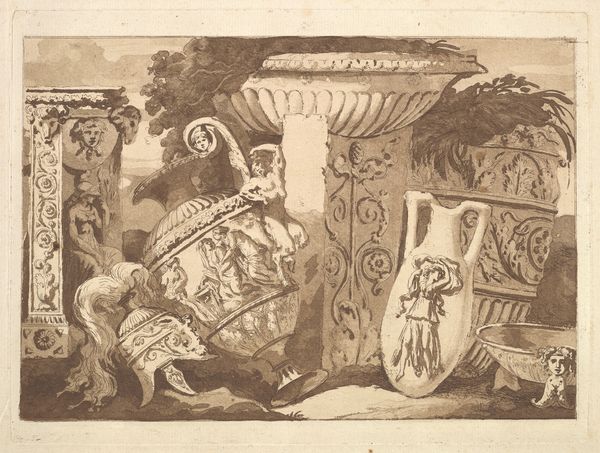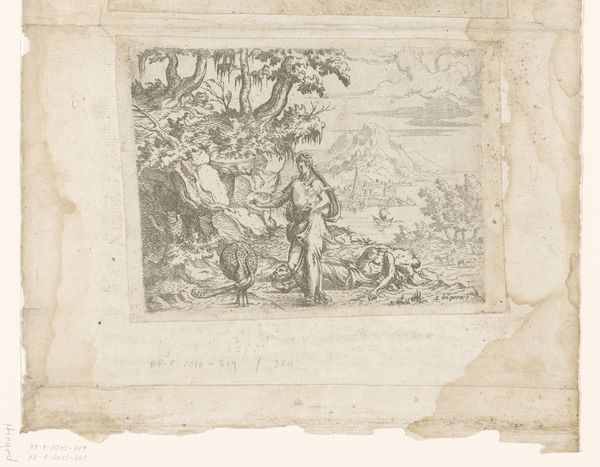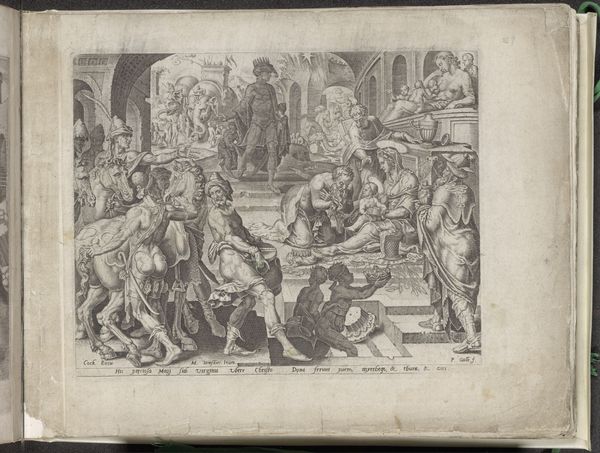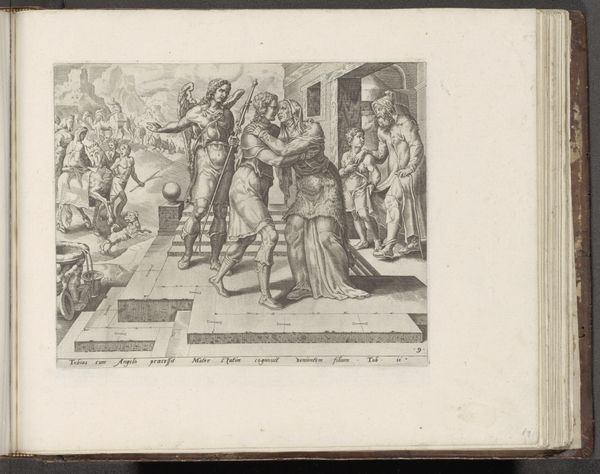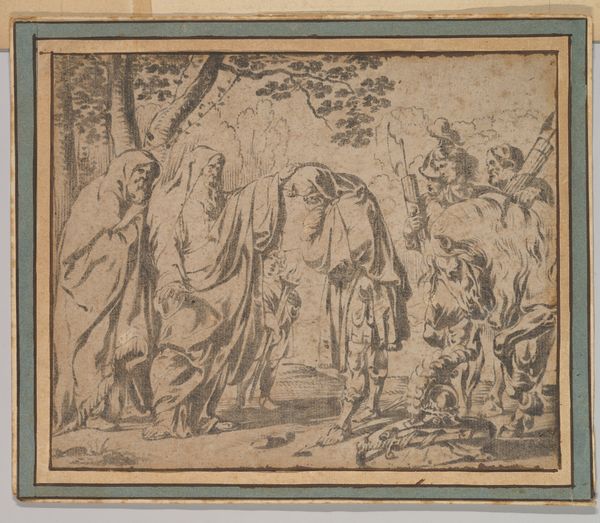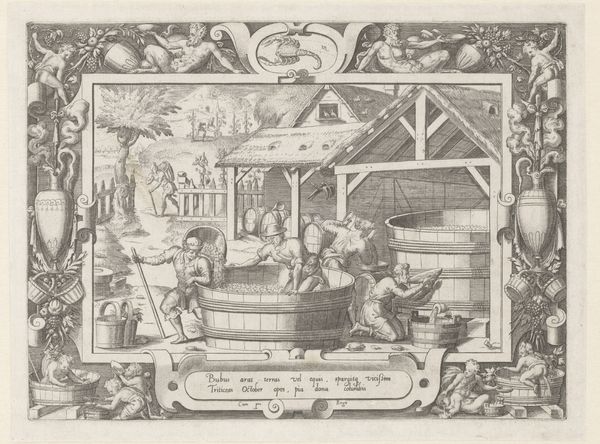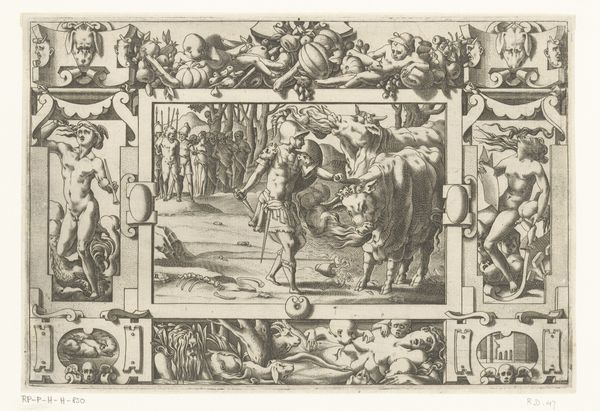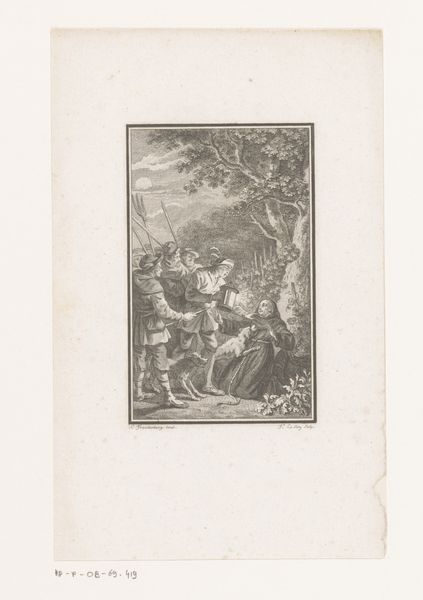
drawing, print, textile, engraving
#
drawing
# print
#
landscape
#
textile
#
romanticism
#
genre-painting
#
engraving
Dimensions: 11 1/2 x 8 1/2in. (29.2 x 21.6cm)
Copyright: Public Domain
Curator: This textile fragment, titled "Toile fragment", dates from around 1815. It is currently held in the collection of the Minneapolis Institute of Art. What strikes you about it? Editor: There’s a charming domesticity to it. It feels like a fleeting glimpse into a bygone era, yet carries within it the subtle markers of class and privilege, particularly in how leisurely pursuits were depicted then. Curator: Indeed. The toile style itself is fascinating. The scene appears printed onto the fabric through engraving. What do you make of the imagery portrayed? Editor: Two women are seated on a bench in what seems to be a manicured garden, possibly engaged in quiet conversation, while a male figure lurks, rather forlornly, behind a tree. The dynamic raises questions of gender roles. Were women of the era often confined to these passive representations of beauty and domesticity while men occupied positions of dominance and power? Curator: Intriguing point. Textiles of this era acted as carriers of visual culture and societal values. Gardens and pastoral settings have long held symbolic importance as sites of leisure, pleasure, and even courtly love. But here, there’s a subtle dissonance, no? Editor: Exactly! The lurking man definitely disrupts the placid scene. Is he an admirer? An unwanted suitor? Or simply an excluded other? His presence hints at complex social hierarchies and power dynamics lurking just beneath the surface of the romanticized pastoral setting. The clothing and setting signal something else. Curator: It seems almost a stage set, or theatrical tableau vivant. Consider also the artistic movement contemporaneous to the artifact. In this historical context, we find strong evidence of Romanticism. What continuity or divergence do you observe between that movement and what is represented on this object? Editor: Well, Romanticism valued emotions and individualism but also exoticized places or periods and there seems to be a bit of both happening here. It romanticizes nature, the scene appears picturesque, but also potentially reflects an imagined past, devoid of true complexities and issues faced by various social classes, women in particular. The garden as a construct! Curator: Perhaps by considering "Toile fragment" beyond its decorative surface, we glimpse the silent narratives interwoven within the cultural memory of its time. Editor: Precisely. It shows how visual and material cultures reinforce and perpetuate societal expectations while also revealing a yearning for deeper meanings.
Comments
No comments
Be the first to comment and join the conversation on the ultimate creative platform.
